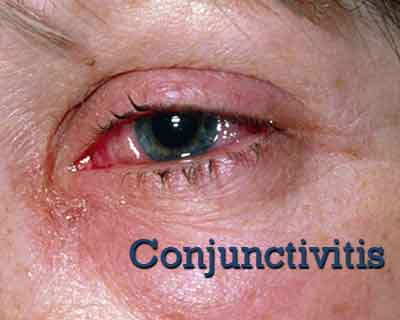- Home
- Editorial
- News
- Practice Guidelines
- Anesthesiology Guidelines
- Cancer Guidelines
- Cardiac Sciences Guidelines
- Critical Care Guidelines
- Dentistry Guidelines
- Dermatology Guidelines
- Diabetes and Endo Guidelines
- Diagnostics Guidelines
- ENT Guidelines
- Featured Practice Guidelines
- Gastroenterology Guidelines
- Geriatrics Guidelines
- Medicine Guidelines
- Nephrology Guidelines
- Neurosciences Guidelines
- Obs and Gynae Guidelines
- Ophthalmology Guidelines
- Orthopaedics Guidelines
- Paediatrics Guidelines
- Psychiatry Guidelines
- Pulmonology Guidelines
- Radiology Guidelines
- Surgery Guidelines
- Urology Guidelines
Topical olopatadine more effective than ketotifen in allergic conjunctivitis

Olopatadine provides quicker relief of symptoms, with improved Quality Of Life and fewer side effects in Allergic conjunctivitis than ketotifen, according to a recent study published in the Journal of Ophthalmic and Vision Research
Allergic conjunctivitis (AC) is associated with itching, redness, tearing, pain, and burning sensation in the eyes. The inflammatory process is caused by the mechanism of immediate hypersensitivity due to direct contact with the allergen. This process triggers mast cells in the conjunctiva to activate and release mediators.
Dr. Dharmishtha Patel and his associates conducted a study to compare topical olopatadine and ketotifen in terms of effectiveness and safety for the management of Allergic Conjunctivitis.
120 patients greater than 8 years with clinically diagnosed seasonal AC were screened and randomly assigned to receive either olopatadine hydrochloride 0.1% (twice daily) or 2 drops of ketotifen fumarate 0.025% (4 times daily) in both eyes. The study compared the safety and efficacy of topical olopatadine and ketotifen in both the treatment groups and assessed the signs and symptoms (itching, redness, tearing, pain, lid swelling, papillae, burning sensation) and the QoL scoring from baseline, 4th day, and 15th day of follow-up visits.The study was conducted for a period of 1.5 years.
The study showed a significant reduction in both the individual scores and total AC scores by the 4th and 15th day in patients receiving either olopatadine or ketotifen. By the 4th-day eyelid swelling and by the 15th-day hyperemia) scores reduced to zero with both the medications. Patients receiving olopatadine were completely free from itching, tearing .papillae, and total AC scores by the 15th day.
A headache was reported in 7% and 13% of patients receiving olopatadine and ketotifen, respectively, whereas burning sensation was seen in 3% and 5% of patients receiving olopatadine and ketotifen, respectively. Compared to baseline, Qol scores were significantly reduced by 4th and 15th day in patients receiving either of the medications.
The study concluded that allergic conjunctivitis can be treated by topical antihistamines, mast cell stabilizers, NSAIDs, and corticosteroids but compared to ketotifen, olopatadine provided quicker relief of symptoms, and improved symptoms of AC and QOL, with fewer side effects.
For more reference log on to: http://10.4103/jovr.jovr_85_17

Disclaimer: This site is primarily intended for healthcare professionals. Any content/information on this website does not replace the advice of medical and/or health professionals and should not be construed as medical/diagnostic advice/endorsement or prescription. Use of this site is subject to our terms of use, privacy policy, advertisement policy. © 2020 Minerva Medical Treatment Pvt Ltd